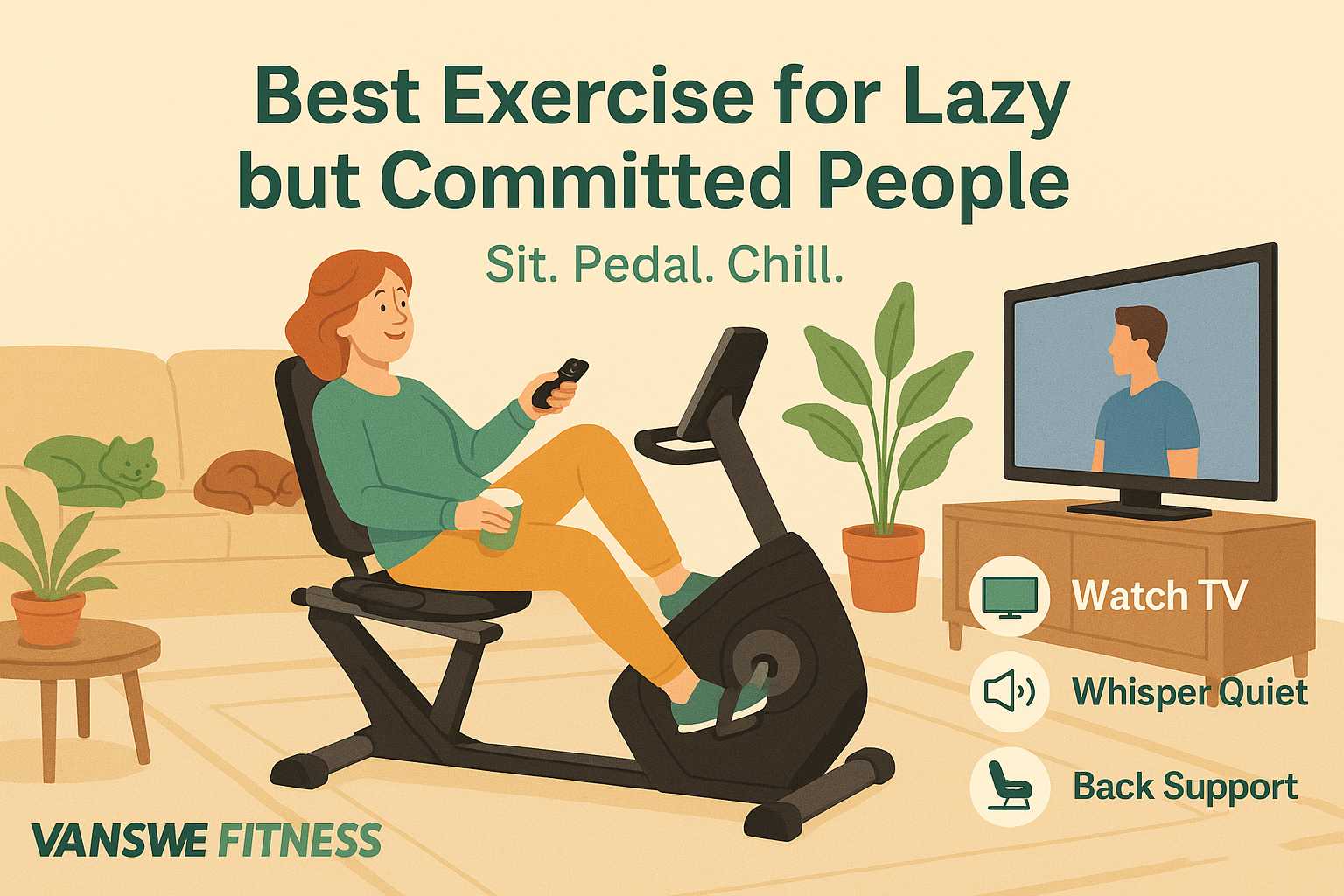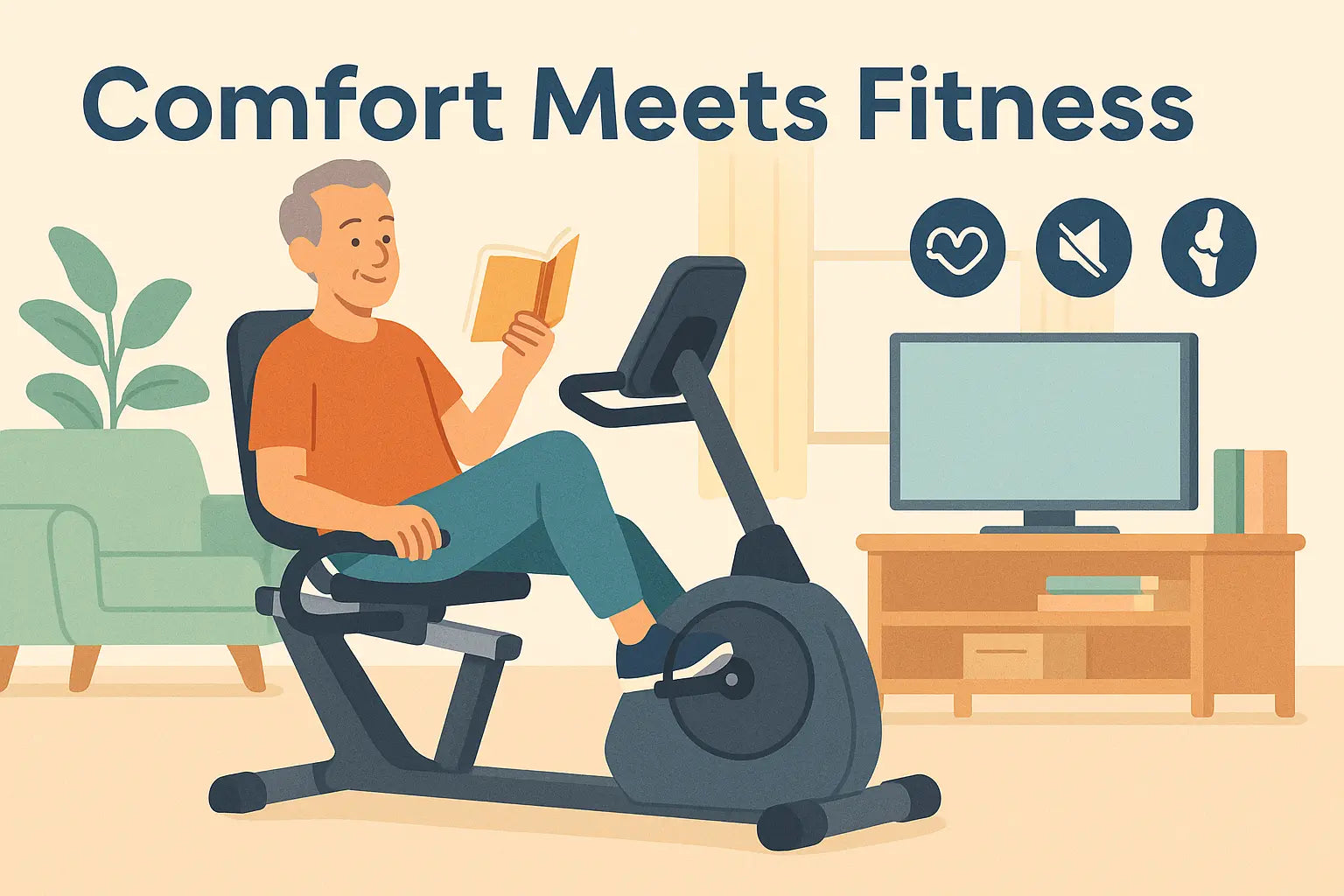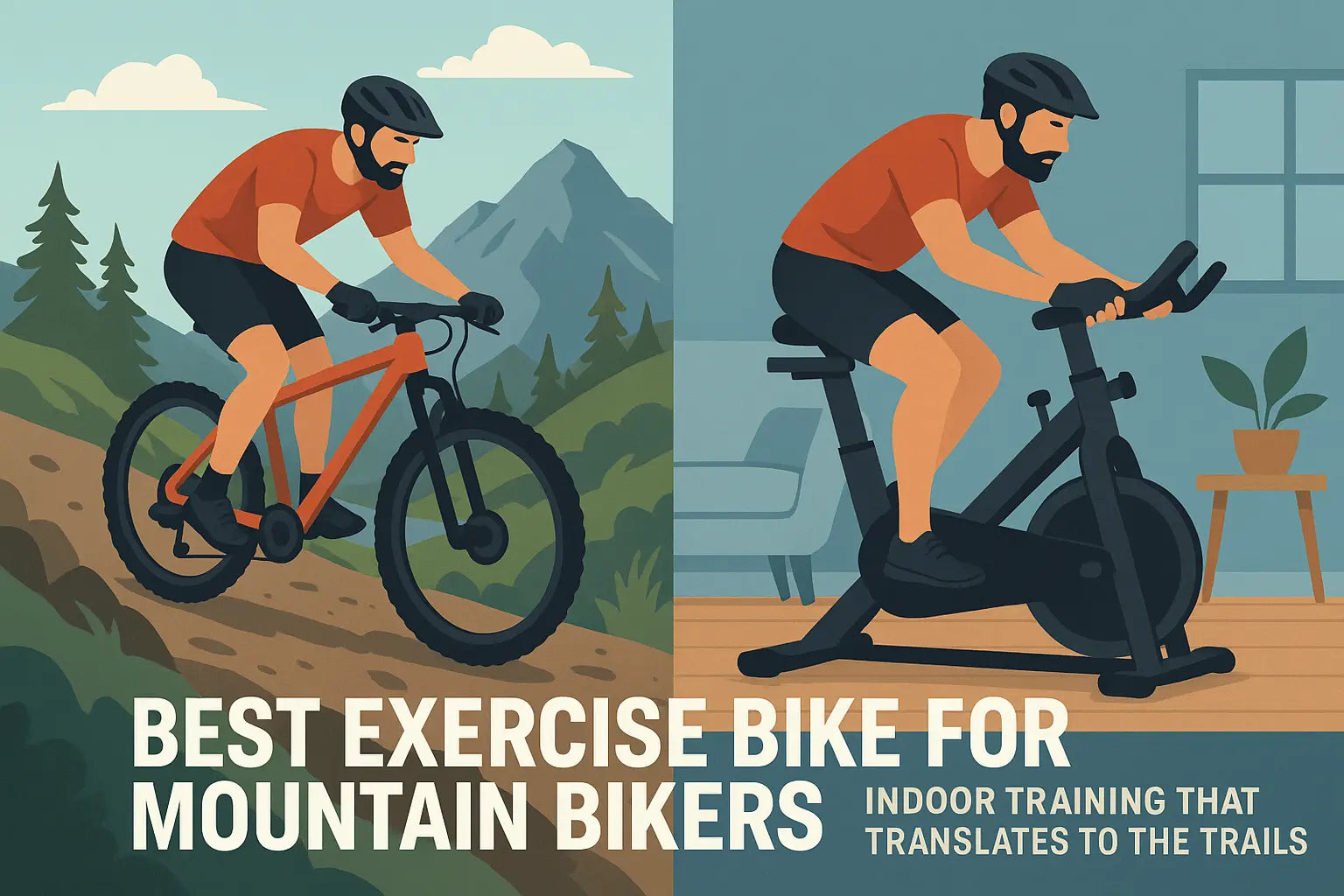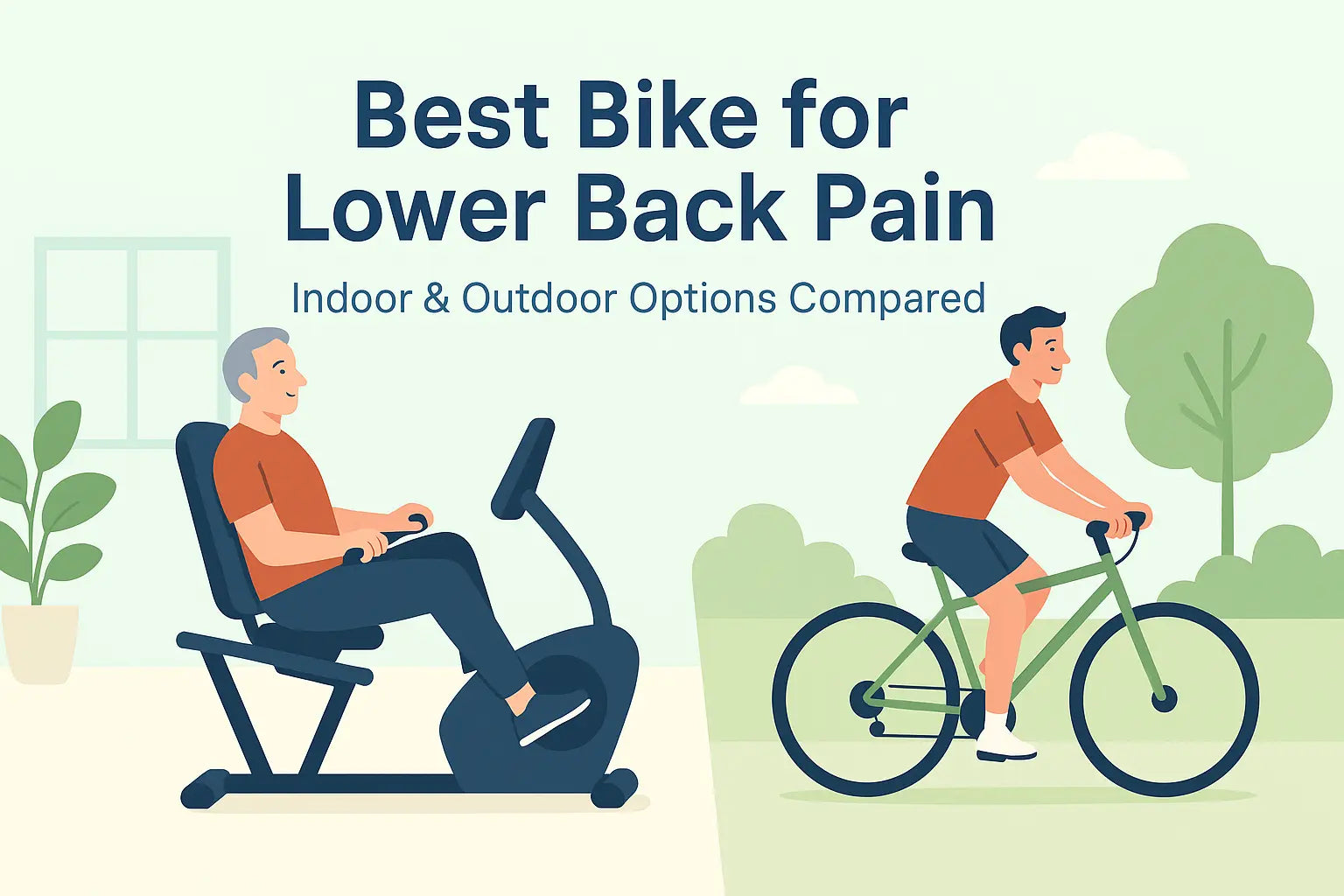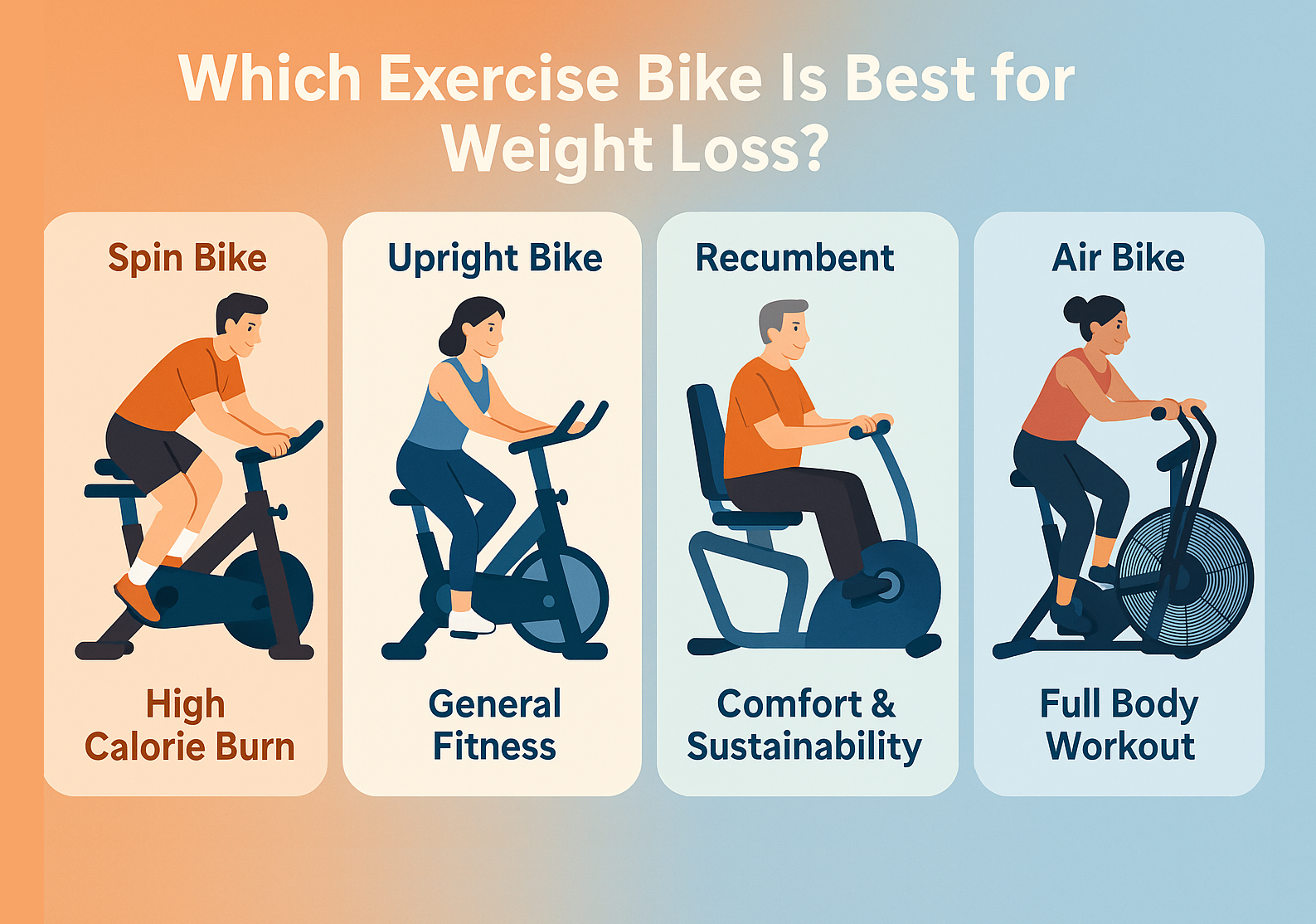Losing weight is about creating a sustainable calorie deficit, and the type of cardio equipment you choose can make a big difference in how quickly and comfortably you achieve your goals. Exercise bikes are among the most popular options because they offer low-impact, versatile workouts suitable for all fitness levels. But with so many types available—spin bikes, upright bikes, recumbent bikes, and air bikes—which one is truly best for weight loss? Let’s dive into the details so you can make the right choice for your fitness journey.
The Main Types of Exercise Bikes
Before comparing them for weight loss, it’s important to understand the basic differences between each type of bike.
Spin Bike
Spin bikes, also known as indoor cycling bikes, are built for high-intensity training. They have a heavy flywheel, adjustable resistance, and a riding position similar to a road bike. This design allows you to push your limits with both steady-state cardio and interval training.
Upright Bike
An upright bike looks similar to a traditional bicycle, with the pedals positioned under the body. It engages your core muscles more than a recumbent bike and offers a moderate to high calorie burn, depending on intensity.
Recumbent Bike
A recumbent bike features a reclined seat with back support, placing your legs forward instead of beneath you. This position reduces stress on your joints and lower back, making it ideal for those with mobility issues or chronic pain.
Air Bike
Air bikes use a large fan wheel that increases resistance as you pedal and move the handlebars. They provide a full-body workout and can be incredibly intense, especially for interval training.
Exercise Bike Comparison for Weight Loss
Here’s how the most popular types of exercise bikes compare across key weight loss factors:
| Type | Calorie Burn | Joint Impact | Muscle Activation | Best For | Key Benefit |
|---|---|---|---|---|---|
| Spin Bike | ★★★★★ | Moderate | Lower body + core | Fast weight loss seekers | High-intensity fat burning |
| Upright Bike | ★★★★ | Moderate | Lower body + core | General fitness | Compact and versatile |
| Recumbent Bike | ★★★ | Low | Lower body | Seniors & Middle-aged | Comfort and sustainability |
| Air Bike | ★★★★★ | Moderate | Full body | HIIT lovers | Total-body calorie torching |
Calorie Burn: Which Bike Works Harder?
If you want the highest short-term calorie burn, a spin bike is best at 400–600 calories per 30 minutes, while air bike HIIT can burn even more in less time. However for long-term weight loss, a recumbent bike is ideal for heavy people thanks to its comfort and joint-friendly design that helps overweight users stay consistent.
However, higher calorie burn isn’t always the best choice for everyone. For example:
-
Spin bike: Best for those who can handle intense training without joint issues.
-
Air bike: Extremely effective but very taxing; not ideal for daily long sessions.
-
Upright bike: Balanced calorie burn without excessive strain.
-
Recumbent bike: Burns fewer calories per minute but allows for longer, more frequent sessions—making total weekly burn competitive.
According to the CDC [1], losing 1–2 pounds per week is considered a safe and healthy rate of weight loss. Given that one pound of fat equals around 3,500 calories, you’d need to burn 500–1,000 extra calories per day to meet your target.
On a spin bike, that could translate to a 30-minute ride every day or three 1-hour sessions per week. However, for heavy people, maintaining that pace can be extremely challenging. You might power through the first day or two, but soon your body will feel overly fatigued—a clear sign it needs rest.
For sustainable weight loss, finding a routine you can comfortably stick with is far more important than pushing yourself to the limit.
Training Intensity vs. Sustainability
When it comes to weight loss, consistency beats intensity. While spin and air bikes burn more calories in less time, their intensity can lead to burnout or injury if overused.
Recumbent bikes and upright bikes, on the other hand, offer a more sustainable approach. You might burn fewer calories per session, but if you can ride for 45–60 minutes daily without discomfort, your total weekly calorie burn may surpass that of occasional high-intensity workouts.
Tip: Combine both methods. Use high-intensity sessions 1–2 times a week and low-to-moderate intensity rides on other days.
For seasoned athletes, the muscle soreness that follows a high-intensity workout is often seen as a badge of progress. But for beginners, that same soreness can sometimes be a warning sign from the body.
In my own experience, during the second 100-kilometer ride in a single week, I felt some soreness in my left arm but decided to push through. The result? A physical therapist diagnosed me with lateral epicondylitis (as known as tennis elbow). The cause was weak forearm extensors and inadequate shoulder and back stabilizers, which meant my wrists and elbows absorbed too much pressure and vibration from gripping the handlebars during intense rides. I ended up a 3 month physical therapy to recover.
That’s why for beginners, a recumbent bike or upright bike is usually a better choice than spin bike or air bike, because they offer lower impact, greater comfort, and a reduced risk of injury.
Matching the Bike to Your Weight Loss Goals
Choosing the best exercise bike for weight loss depends on more than just calorie burn rates. Here’s how to decide:
-
If you want quick, intense results: Spin bike or air bike.
-
If you are a beginner, middle-aged, a senior, or someone dealing with knee, hip, or lower back pain: Recumbent bike.
-
If you want a balance between comfort and calorie burn: Upright bike.
-
If you want full-body training: Air bike.
If you’ve tried to lose weight multiple times but only managed to stick with it for a few weeks, a recumbent bike might be your best option. Its comfortable design makes it easy to pedal while watching TV or listening to music, so you often find yourself riding for an hour without even realizing it—helping you build a consistent workout habit. In contrast, simply sitting on a spin or upright bike without pedaling is uncomfortable, and once you start pedaling, it’s even harder to stay on for long periods. If you’ve struggled with failed weight loss attempts before, start with a recumbent bike. It lets you work out in a relaxed, enjoyable way instead of relying solely on willpower.
If you’ve struggled to lose weight in the past, a recumbent bike is the best choice among exercise bikes because its comfort and joint-friendly design make it easier to stick with your workouts long term.
Comfort and Joint Health
For people with knee, hip, or lower back issues, the recumbent bike is often the safest choice. According to a 2024 study published in the Journal of Biomechanics titled "Joint Contact Forces During Semi-Recumbent Seated Cycling" [2], the reclined seat and forward pedal position reduce strain, allowing you to work out longer without pain.
Who benefits most from a recumbent bike?
-
Seniors and older adults
-
People recovering from injury or surgery
-
Anyone with chronic joint pain
-
Overweight beginners who need a gentle start
-
Newcomers or those returning after a long break from exercise
If you have knee, hip, or lower back problems, a recumbent bike is the best exercise bike for you because it reduces joint stress, while spin bikes, upright bikes, and air bikes can increase discomfort.
Muscle Activation Differences
Weight loss comes from burning calories, but muscle activation plays a role in boosting metabolism and improving body composition.
-
Spin and upright bikes: Engage your quads, hamstrings, glutes, and core.
-
Recumbent bikes: Primarily target lower body muscles, with minimal core activation.
-
Air bikes: Involve both upper and lower body, leading to a higher overall energy expenditure.
If your goal is to maximize muscle engagement while losing weight, an air bike or spin bike might be more effective—provided you can maintain proper form and recovery.
Practical Tips for Losing Weight on Any Exercise Bike
Regardless of the bike you choose, the following tips will help you maximize your results:
-
Set realistic goals: Aim for 1–2 pounds of weight loss per week.
-
Mix steady-state and interval training: Intervals burn more calories in less time, while steady rides build endurance.
-
Track your intensity: Use heart rate zones to ensure you’re training effectively.
-
Combine cardio with strength training: Muscle mass increases your resting metabolic rate.
-
Maintain a calorie deficit through diet: Nutrition plays a larger role than exercise alone.
If you’re unsure how to plan your weekly workouts and calorie intake based on your target weight, check out this weight loss guide—where I’ll walk you through a practical, five-step plan for sustainable weight loss.
Final Thoughts
For older adults or heavy people, a recumbent bike is the better choice because it offers comfort, joint protection, and long-term sustainability, while for younger riders who can handle high-intensity workouts, spin/upright/air bike can deliver faster weight loss results.
If you’re considering a recumbent bike, check out this Best Recumbent Exercise Bike 2025 guide, where you’ll find tips on how to choose the right model, side-by-side product comparisons, and real user reviews to help you make the best decision.
Reference
-
Centers for Disease Control and Prevention. (2025, January 17). Steps for losing weight. Healthy Weight and Growth. https://www.cdc.gov/healthy-weight-growth/losing-weight/index.html
-
Crossley, C. B., Diamond, L. E., Saxby, D. J., de Sousa, A., Lloyd, D. G., Fornusek, C., & Pizzolato, C. (2024). Joint contact forces during semi-recumbent seated cycling. Journal of Biomechanics, 168, 112094. https://doi.org/10.1016/j.jbiomech.2024.112094
Latest Articles


